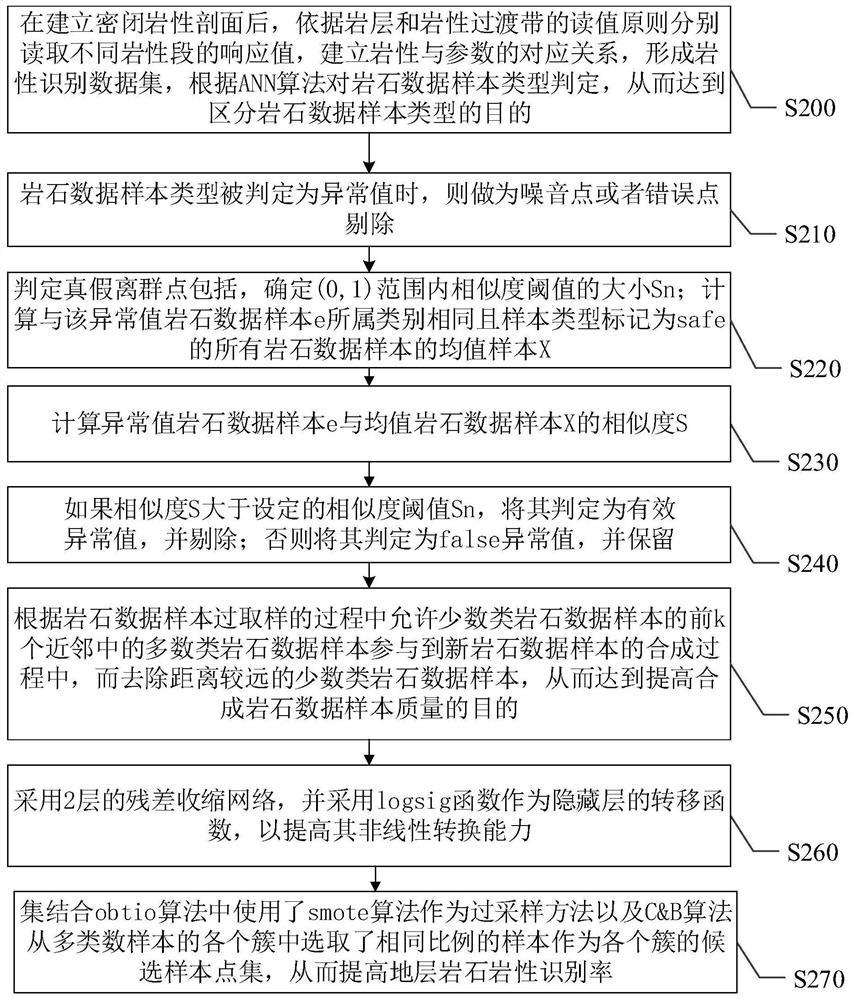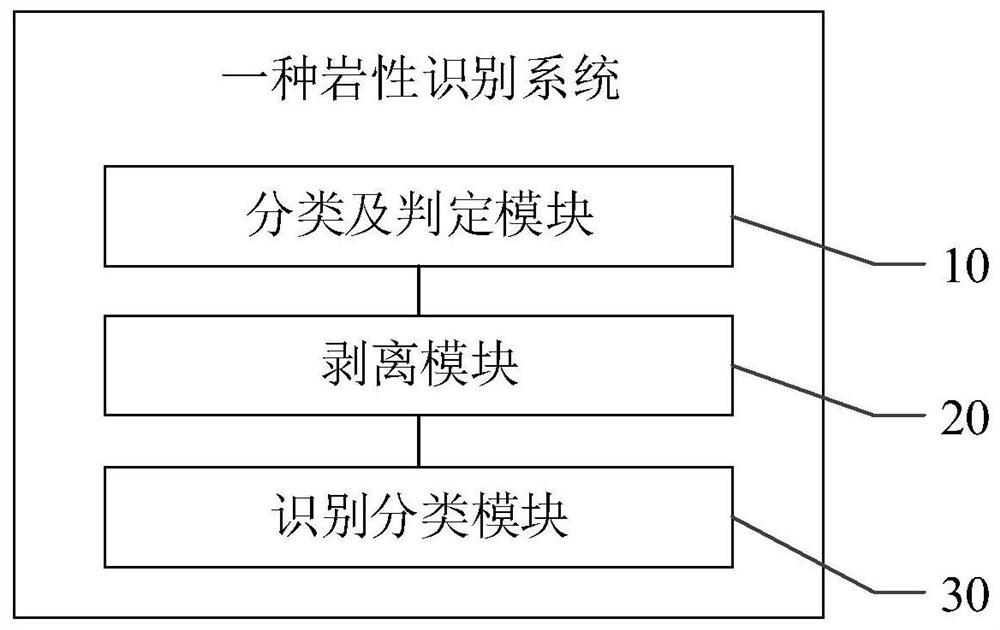Lithology identification method and system
A technology for lithology identification and lithology, applied in the field of deep learning, it can solve the problems of algorithm performance impact, separation from geological background, and many variable parameters, and achieve the effect of improving rock lithology identification rate.
- Summary
- Abstract
- Description
- Claims
- Application Information
AI Technical Summary
Problems solved by technology
Method used
Image
Examples
Embodiment 1
[0029] see figure 1 , figure 1 Shown is a schematic diagram of the steps of a lithology identification method provided in the embodiment of the present application, which is as follows:
[0030] Step S100, establishing a closed lithology profile, and classifying and judging the rock data samples according to the number of rock data samples in the lithology identification data set formed by the lithology profile;
[0031] In some embodiments, before forming the lithology identification data set, combined with the geological background and rock formation characteristics of the research area, and based on the overall requirements of reservoir evaluation, the lithology of the research area is determined from two aspects: the description of the sealed core sample and the naming of the cast thin section. Due to the strong heterogeneity of complex reservoirs and the drastic changes in lithology, the local cast thin slices of cores cannot accurately reflect the real lithology of form...
Embodiment 2
[0043] see figure 2 , figure 2 A schematic diagram of the detailed steps of a lithology identification method provided by an embodiment of the present invention is as follows:
[0044] In step S200, after the closed lithology section is established, the response values of different lithology sections are read according to the reading principles of the rock formation and lithology transition zone, and the corresponding relationship between lithology and parameters is established to form a lithology identification data set. The ANN algorithm determines the type of rock data samples, so as to achieve the purpose of distinguishing the types of rock data samples.
[0045] In step S210, when the rock data sample type is determined to be an outlier, it is eliminated as a noise point or an error point.
[0046] Step S220, judging the true and false outliers includes determining the size Sn of the similarity threshold in the range (0,1); calculating the values of all rock data ...
Embodiment 3
[0074] see image 3 , image 3 A schematic diagram of a lithology identification system module provided by an embodiment of the present invention is as follows:
[0075] The classification and determination module 10 is used to establish a closed lithology profile, and classify and determine the rock data samples according to the number of rock data samples in the lithology identification data set formed by the lithology profile;
[0076] The stripping module 20 is used for performing data preprocessing according to the rock data samples, removing true outliers therefrom, oversampling the rock data sample types marked as effective samples, and obtaining a balanced stratum rock data set;
[0077] The identification and classification module 30 is used to normalize the rock data set, normalize the value of the element content of the rock data sample, and input it into the trained residual shrinkage network to classify the lithology of the formation rock data sample .
[0078]...
PUM
 Login to View More
Login to View More Abstract
Description
Claims
Application Information
 Login to View More
Login to View More - R&D
- Intellectual Property
- Life Sciences
- Materials
- Tech Scout
- Unparalleled Data Quality
- Higher Quality Content
- 60% Fewer Hallucinations
Browse by: Latest US Patents, China's latest patents, Technical Efficacy Thesaurus, Application Domain, Technology Topic, Popular Technical Reports.
© 2025 PatSnap. All rights reserved.Legal|Privacy policy|Modern Slavery Act Transparency Statement|Sitemap|About US| Contact US: help@patsnap.com



